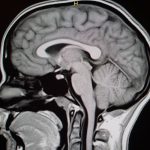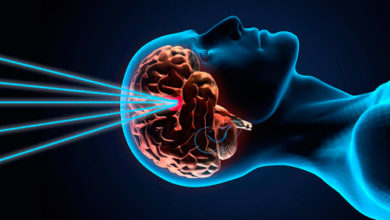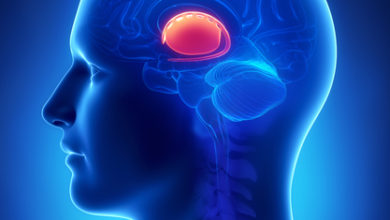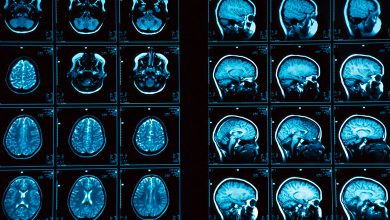Symptoms of a pituitary tumor
The content of the article
- Causes and signs of pituitary tumors in women and men
- Pituitary tumor - symptoms in men
- Symptoms in women, diagnosis
- Benign pituitary tumor
- Symptoms in children
- Consequences of the appearance of a tumor in the medullary process
- Treatment - what is needed for recovery
- What to do to prevent the disease from occurring
The pituitary gland plays a large role in human physiology, therefore any pathologies associated with the cerebral appendage affect the condition of all organs. If there is a suspicion of a pituitary tumor, symptoms in women are divided into two types - local and peripheral. Before moving on to their description, it is necessary to explain why the organ is important for a person, as well as what are the causes of this disease.
The pituitary gland is responsible for the production of hormones that affect growth, reproductive and metabolic processes in the body. This organ is the center of the human endocrine system. When cells multiply abnormally, a tumor forms on the front or back surface, which causes an imbalance of hormones. A tumor of the pituitary gland (adenoma) also causes neurological problems of various types.
Most often, the disease occurs in women and men over 30-40 years of age. The growth of the meninges into it can have a negative effect on the organ. In rare cases, neoplasms will not have any effect on the body. But more often, adenoma causes 15% of all intracranial neoplasms.
Causes and signs of pituitary tumors in women and men
Even modern research methods cannot accurately determine the causes of the disease. The hereditary factor also plays an important role. But among the possible causes, doctors highlight the presence of:
- chronic sinusitis;
- infections of the nervous system;
- head injuries.
Adenoma can develop due to the intake of hormonal substances, as well as if during pregnancy adverse factors affect the fetus. There are other theories as to why a pituitary tumor may develop. For example, due to an excess of the hypothalamic hormone or genetic disorders in the cells of the brain appendage.
The symptoms of the disease depend on the type of neoplasm. With a tumor, hormones may be abnormally produced in women, such as:
- prolactin;
- corticosteroids;
- somatotrolin;
- thyroid-stimulating;
- gonadotropic.
When an adenoma puts pressure on the brain, it can be determined by local symptoms. These include the following:
- sleep disturbance;
- persistent, uncontrollable headache ;
- changes in the psyche.
As soon as the tumor increases, it leads to the above-mentioned visual disturbances. Peripheral symptoms depend on which hormone is sharply increased or decreased. Often negative changes occur not with one, but with several hormones. This is why the number of symptoms increases.
Pituitary adenoma is first of all signaled by hormonal imbalance, and local symptoms appear much later. For example, if the production of somatropic hormone has increased, an increase in the amount of connective tissue is observed. This condition can be identified by elongated and thickened earlobes and the tip of the nose. The brow ridges also grow, and the terminal phalanges of the fingers increase.
If the tumor affects the hormone produced by the adrenal glands, Cushing-like syndrome develops. Its symptoms are:
- oily skin;
- the appearance of hair on the face and chest;
- the presence of bruises on the skin that appeared for no reason;
- hair loss;
- rough voice;
- obesity, but exclusively the abdomen, legs and arms remain thin.
The tumor can control the production of thyroid-stimulating hormone, which leads to the development of hypothyroidism or thyrotoxicosis. In the first case, the symptoms are:
- decrease in intellectual activity;
- slow movements;
- swollen skin;
- constant chilliness of the limbs.
In the second, other signs appear, such as a change in character, which becomes nervous and irritable. There is also sleep disturbance and protrusion of the eyeballs from the socket.
Due to the mixed nature of the tumor, symptoms may overlap each other, which complicates the woman’s condition.
Pituitary tumor - symptoms in men
Pituitary adenoma is a common disease that can be successfully treated with timely diagnosis. In men, this pathology is observed in 10-20 cases out of 100. But most often, the neoplasm grows for a long time without obvious symptoms.
In men, the disease occurs for the following reasons:
- infection with infectious diseases such as meningitis or tuberculosis;
- severe traumatic brain injury;
- taking hormonal medications;
- genetic predisposition.
How to recognize a pituitary tumor? Symptoms in men appear during the active growth of the tumor, when the adenoma becomes more than 2 cm and begins to put pressure on the brain. The whole process is accompanied by disorders of the endocrine and nervous systems.
The main features are:
- sudden deterioration of vision, possibly in only one eye;
- headaches in the temple, forehead and area around the eyes that do not go away when changing body position or taking painkillers;
- chronic fatigue;
- low blood pressure and sensitivity to cold.
Various tumors can form in the brain appendage, each of which has its own individual characteristics.
Symptoms in women, diagnosis
Biochemical signs or some clinical manifestations help determine the disease. For example, gigantism in children, acromegaly in adults. If a pituitary tumor is suspected, symptoms in women and diagnostics confirm the diagnosis unless:
- A thorough examination of hormone balance is carried out, as well as an ophthalmological examination. They do a blood test and also check your vision;
- They examine the cerebrospinal fluid because it may contain proteins. This is an indirect sign of the appearance of neoplasms;
- They do computed tomography and angriraphy, and radiography of the brain for neuroimaging of the tumor.
A photo of a pituitary tumor in women who have been accurately diagnosed with the disease, as well as the symptoms of the disease, clearly demonstrates its neuroanatomical manifestations.
Benign pituitary tumor
Most often, neoplasms in the brain appendage are benign, that is, adenomas. A benign tumor of the pituitary gland retains the properties and functions inherent in healthy cells. It grows slowly, practically not growing into the surrounding tissues, but only compresses them. Adenoma is easily removed surgically, and the number of relapses is very small.
Benign pituitary tumors, the symptoms of which are listed above, vary depending on the size and hormones being controlled. An adenoma may or may not participate in the production of hormones. The first symptoms of the disease are:
- changing the shape of the face;
- nose enlargement;
- presence of brow ridges;
- changes in bite and discrepancy of teeth.
Due to the appearance of neoplasms, human neurophysiology also changes. The tumor puts pressure on the brain cells, which contributes to the appearance of migraines, vegetative-vascular dystonia and fainting. In the worst case scenario, dementia and dramatic personality changes occur.
A malignant tumor penetrates into surrounding tissues, organs and lymph nodes. It is characterized by rapid growth and formation of metastases. A malignant tumor is more difficult to treat, and relapses occur much more often. Only a doctor can determine whether surgical intervention is possible. It all depends on the size of the tumor. In the early stages, when the tumor is quite small, a favorable outcome is possible.
Symptoms in children
Identifying the cause of neoplasms in children is even more difficult. The main causes of the disease are:
- hereditary predisposition;
- disturbances in fetal formation;
- mechanical damage to the head;
- exposure to radioactive substances on the body.
If a pituitary tumor is suspected, symptoms in children should be as follows:
- lethargy;
- general malaise;
- tearfulness;
- nausea and vomiting;
- sudden changes in mood that are unusual for a child;
- physical underdevelopment or too rapid development;
- blurred vision;
- the appearance of a thyroid goiter;
- cardiopalmus;
- bowel dysfunction, most often constipation;
- feeling of thirst;
- cold intolerance;
- fainting;
- rapid fatigue in the absence of physical activity.
Timely diagnosis of the disease in children is possible only through a clinical examination. To do this, you need to undergo a general examination by a doctor, collect the patient’s medical history, test blood and urine for hormones, and do a CT or MRI of the brain. You will also need to consult the following specialists - an ophthalmologist, an endocrinologist, and a glucose tolerance blood test to measure your sugar level. A pituitary adenoma for a child is dangerous due to relapse after treatment, as well as complete loss of vision, decreased concentration and memory, impaired speech or thyroid function. Due to untimely treatment, even a benign tumor can cause disability or complications in the functioning of the nervous system.
Consequences of the appearance of a tumor in the medullary process
The pituitary gland of the brain, whether the tumor is benign or malignant, causes constant pain in the frontal, temporal and infraorbital region. It is accompanied by constant nausea, blurred vision and does not depend on body position, and also poorly responds to analgesics. If the meninges rupture due to excessive pressure of the tumor on it, the pain stops.
But this does not solve the problems. After all, further growth of tumors will put pressure on the optic nerves, which will lead to defects, and then to the complete death of the optic nerves and blindness. Sometimes only one eye goes blind. The upward growth of the adenoma leads to pressure on the hypothalamus. The signs of this process are:
- temperature fluctuations;
- sleep disturbance;
- emotional shifts.
At the same time, the tumor affects the ventricles of the brain, which can cause dropsy. Pressure on the temporal and frontal lobes can cause seizures, double vision, or optic nerve palsy. The adenoma grows gradually, and its symptoms appear one after another.
But in some cases, sudden hemorrhage and apoplexy are also possible. Such complications lead to complete atrophy of the pituitary gland and serious visual impairment.
Treatment - what is needed for recovery
When a pituitary tumor is detected, treatment depends on the type of tumor. It comes in the following types:
- medicinal;
- radial;
- traditionally surgical;
- complex.
In children, adenoma is diagnosed extremely rarely, but at a young age it is a serious disease. Therefore, it is important to undergo examination in a timely manner to prevent complications that can affect the vital systems of the body. The child should be seen by a doctor at the first signs of illness. For a favorable outcome, you must adhere to the following rules:
- regularly visit a doctor, under whose strict supervision, undergo a therapeutic course;
- do not self-medicate;
- rationally distribute time for physical activity and rest;
- avoid stressful situations and worries;
- provide the child with a rational and balanced diet ;
- maintain a daily routine;
- avoid excessive mental and physical stress
If a tumor in the pituitary gland in women is treated with medication, then most often the doctor prescribes pills such as dopamine agonists, which cause shrinkage of prolactin adenomas and corticotropin. In this case, cabergoline and other medications are used to regulate the level of hormones in the body.
When surgery is not possible, radiosurgical treatment is used. It is often prescribed for elderly patients. The radiation dose depends on the size and type of tumor. But radiation therapy has a number of contraindications, for example, the tumor should not be located too close to the optic nerves. In addition, this method has side effects.
Therefore, innovative methods like cyber knife or gamma knife are often used instead. This means that the tumor is irradiated from all sides with thin pens of radiation. But the most effective treatment method remains surgery. Whether it is acceptable depends on the location of the adenoma and its size.
The tumor is removed either frontally using an optical device or by resection through the sphenoid cranial bone. In modern surgery, endonasal transsphenoidal intervention is used, that is, the tumor is removed through the nasal passage. The method is safe and does not require incisions and does not cause complications such as infection. To carry out their plans, doctors use miniature surgical instruments and an endoscopic probe.
If there is a suspicion of a pituitary tumor, treatment can be mixed. In this case, after surgical removal of the tumors, additional radiation therapy is performed and hormonal medication is prescribed. How favorable the prognosis will be depends on timely diagnosis, the size of the adenoma and its hormonal activity. In 25% of cases, prolactinomas and somatotropinomas can be cured.
But other types of tumors are successfully cured by 88%. It is important to prevent the spread of pathological processes, because it is no longer possible to restore the optic nerves at this stage.
Radiotherapy is also possible. In the most extreme cases, if the formation is already too large, craniotomy is performed. Which treatment method to choose depends on the age of the child, his individual characteristics, and possible consequences.
What to do to prevent the disease from occurring
As preventive methods, it is recommended to avoid traumatic brain injuries and stressful situations, and promptly treat infectious diseases. If a child or adult is undergoing long-term treatment with hormonal drugs, it is advisable to check with a doctor afterwards.
Inflammation of the pituitary gland is determined by spinal cord puncture. The cause of the disease may be previous meningitis, encephalitis or other diseases that provoke an acute inflammatory process. After an accurate diagnosis, drug or surgical treatment is prescribed. If disturbances in the functioning of the brain appendage have been identified, the patient needs to be prepared for long-term treatment. With some diagnoses, you have to adhere to a certain routine and take medications for the rest of your life.
The pituitary gland is responsible for the production of about 10 different hormones and controls the functioning of the internal organs and systems of the body. Therefore, any disturbances in its functioning affect the activity of the sexual, urinary, cardiovascular and respiratory systems, and also affect reproductive functions. The pituitary gland enlarges as a person grows older and during pregnancy. But changes can also be caused by pathological factors. Therefore, constant care of your health and regular examination by a doctor will help prevent serious illness. After all, modern doctors have all the necessary methods for safe and effective treatment.
Please rate the article:

 (4 ratings, average: 4,75 out of 5)
(4 ratings, average: 4,75 out of 5)



